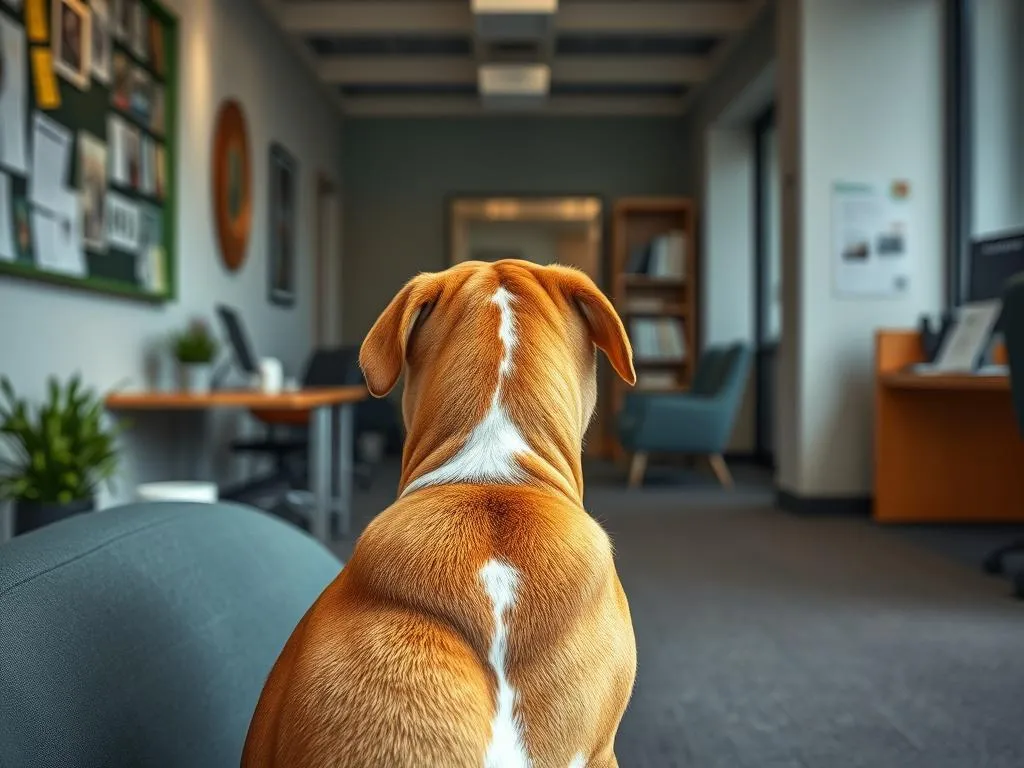
Returning to the office after an extended period of working from home is a significant transition for many pet owners. As you prepare to adjust to a new routine, it’s equally important to consider how this change will affect your furry friend. Dogs thrive on routine and can experience anxiety when their environment shifts suddenly. Here are some actionable tips to help your dog adjust smoothly to the new normal.
Understanding the Impact of Your Return to the Office
Behavioral Changes in Dogs
When you start going back to the office, your dog may exhibit various behavioral changes. Many dogs experience separation anxiety when left alone for extended periods. You might notice your dog becoming more clingy, barking excessively, or even engaging in destructive behaviors like chewing furniture or digging. These actions are often signs of stress and anxiety in dogs.
The Importance of Routine
Establishing a consistent daily routine is crucial for your dog’s mental health. Dogs are creatures of habit, and a stable routine can help alleviate anxiety. Regular feeding times, walks, and play sessions provide a sense of security. By maintaining a consistent schedule, you can help your dog feel more comfortable as you transition back to the office.
Preparing Your Dog for Your Return to the Office
Gradual Desensitization
One effective way to prepare your dog for your absence is through gradual desensitization. Start by leaving your dog alone for short periods, such as 15 minutes, and then gradually increase the duration. This technique helps your dog associate your departures with positive experiences rather than stress.
Example Schedule for Gradual Desensitization:
- Day 1: Leave for 15 minutes
- Day 2: Leave for 30 minutes
- Day 3: Leave for 1 hour
- Day 4: Leave for 2 hours
- Day 5: Leave for 3 hours
Creating a Comfortable Space
Setting up a designated space for your dog is essential. Choose a quiet area in your home where your dog feels safe. Include comfort items like a cozy bed, favorite toys, and items with familiar scents, such as a worn t-shirt. This designated space can become a sanctuary for your dog during your time away.
Exercise and Mental Stimulation
Regular exercise plays a crucial role in reducing anxiety in dogs. Ensure your dog gets plenty of physical activity before you leave for work. Long walks, games of fetch, or even a romp in the yard can help burn off excess energy. Additionally, consider engaging toys, such as puzzle feeders or interactive toys, that can keep your dog occupied while you are away.
Training Techniques to Help Your Dog Adjust
Basic Commands and Obedience
Before you start going back to the office, reinforce basic commands and obedience training. Simple commands like “sit,” “stay,” and “down” can help your dog feel more secure and controlled in various situations. Engage in short training sessions daily to improve your dog’s focus and confidence.
Crate Training
Crate training can be beneficial for dogs struggling with separation anxiety. A well-trained dog can find comfort in their crate, viewing it as a safe space rather than a punishment. Start by introducing the crate gradually, allowing your dog to explore it at their own pace. Keep the crate comfortable with bedding and toys, and gradually increase the time your dog spends inside.
Step-by-Step Guide for Crate Training:
- Introduce the crate positively with treats and praise.
- Encourage your dog to enter the crate willingly.
- Close the door for short periods while you’re nearby.
- Gradually increase the time the door is closed with you out of sight.
- Never use the crate for punishment; it should be a safe haven.
Socialization with Other Dogs
Encouraging socialization can also help reduce anxiety. Arrange playdates with other dogs or visit a local dog park where your dog can interact and play. Socializing helps dogs learn how to cope with being away from their owners and builds confidence in different environments.
Finding the Right Care Solutions
Dog Walkers and Pet Sitters
If you will be away for long hours, consider hiring a dog walker or pet sitter. Look for a reliable professional who understands dog behavior. When interviewing candidates, ask about their experience and approach to handling anxious dogs. Always check references and consider a trial walk to see how they interact with your dog.
Doggy Daycare
Enrolling your dog in doggy daycare can be an excellent option for socialization and mental stimulation. A reputable daycare facility provides a safe environment where your dog can play and interact with other dogs. When selecting a daycare, visit the facility, ask about staff qualifications, and find out how they handle behavior issues.
Family and Friends as Caregivers
Relying on family or friends can also be a viable option for dog care. This approach can provide your dog with familiar faces, which may reduce anxiety. However, it’s essential to discuss expectations and routines with your caregivers to ensure consistency in care.
Monitoring Your Dog’s Behavior
Recognizing Signs of Stress
As you transition back to the office, it’s essential to monitor your dog’s behavior closely. Look for signs of stress such as:
- Excessive barking or whining
- Destructive behavior
- Changes in appetite
- Lethargy or withdrawal
- Pacing or restlessness
If you notice any of these signs persisting, it may be time to consult a veterinarian or a dog behaviorist for additional support.
Keeping a Routine Check
Regularly checking in on your dog’s behavior and routine is crucial. Pay attention to any changes and adjust your strategies as necessary. Maintaining a routine that includes regular exercise, playtime, and bonding moments will help your dog feel more secure and content.
Maintaining a Connection with Your Dog While at Work
Technology Solutions
Utilizing technology can help you maintain a connection with your dog while at work. Pet cameras allow you to monitor your dog’s behavior in real-time, providing peace of mind. Some cameras even offer two-way audio, so you can talk to your dog and reassure them while you’re away. Additionally, there are apps available that allow you to schedule walks or check-ins with dog walkers.
Quality Time After Work
After a long day at the office, it’s essential to spend quality time with your dog. Engaging in activities like going for a walk, playing fetch, or having a cuddle session can strengthen your bond and help your dog feel secure. Regular interaction helps reinforce the idea that while you may be away during the day, you will always return home.
Conclusion
Transitioning back to the office can be a challenging time for both you and your dog. By understanding the impact of this change and taking proactive steps to prepare your dog, you can help alleviate their anxiety and ensure a smoother adjustment. From establishing a routine to utilizing technology for monitoring, there are many ways to support your furry friend during this transition. Remember, the key is to be patient and attentive to your dog’s needs as you both navigate this new chapter together.









